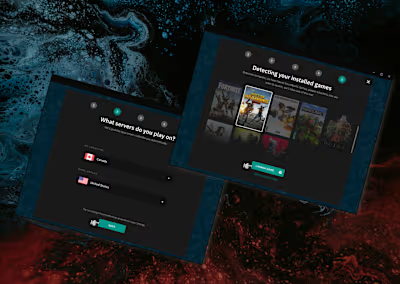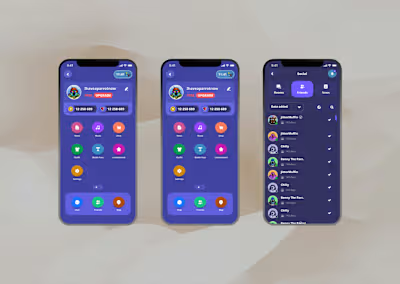Visitor Kiosk for Logistics
Redesigning the Visitor Kiosk for Company Logistics
Notice: This project originated as a design challenge from a prospective employer. While it's a conceptual piece rather than a shipped product, it was crafted to solve a real-world UX problem and serves as a comprehensive case study of my design process. Logo is also fictional.
Project
Designing a digital kiosk solution to streamline the check-in process for visitors and contractors at high-traffic facilities, replacing manual, paper-based systems.
The Challenge
The IT company providing the kiosk solution to UniQ Logistics identified that the onboarding process for new contractors was still manual and created significant bottlenecks. The challenge was to integrate a seamless registration and safety training flow into the kiosk experience, clearly differentiating between visitors, new contractors, and recurring contractors.
"We require a solution that will span three areas: the check-in screen, the contractor sign-up screen, and the location safety/security training screen."
My Role & Responsibilities
As the lead Product Designer, I was responsible for the entire design lifecycle, including:
User Research Strategy
User Experience (UX) Flow Design
Wireframing and High-Fidelity Prototyping (UI)
UX Writing
Design Process
My approach was based on a user-centered design process, focused on deeply understanding the operational context before proposing solutions.
1. Research & Discovery
The Research Approach
Given the tight deadline of this challenge, we adopted an expert qualitative research approach. Instead of a broad survey, we focused on gathering deep insights from a single source with a comprehensive view of the problem to maximize the relevance of our findings.
Methodology
We conducted an in-depth interview with a subject matter expert. We contacted a leading security firm specializing in port logistics and access control. Our key point of contact was the Chief of Security, a professional with 15 years of experience overseeing access control at several different sea-product factory facilities. His role provided a unique perspective on the patterns, problems, and needs of both security personnel and the hundreds of contractors they manage daily.
Research Limitation
It's important to note that due to time and access constraints, direct interviews with contractors were not possible. Therefore, insights into their behaviors are based on the expert observations and operational data reported by the Chief of Security.
Key Insights
"The Line is the Enemy" (The Operational Perspective): According to the Chief of Security, the most critical Key Performance Indicator (KPI) at an access point is "time-per-person." Any process that takes longer than 30 seconds per individual is unsustainable during peak hours and creates a domino effect on the facility's logistics.
"The Newcomer is the Bottleneck" (The 80/20 Problem): The expert identified that a great percentage of delays are caused by first-time visitors/contractors. Their unfamiliarity with the process requires manual intervention from staff, bringing the queue to a complete halt.
"The Paper vs. Digital Dilemma": He reported that paper logs are a security risk and an auditing nightmare.
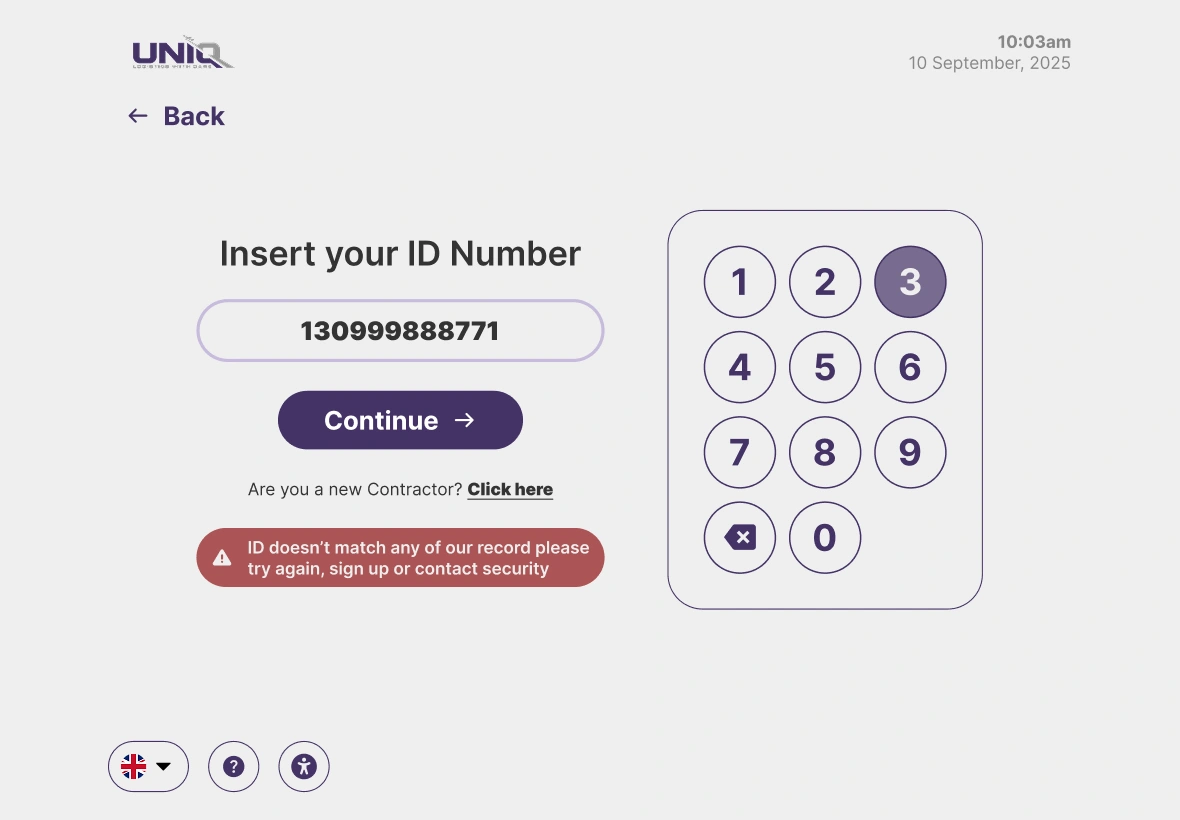
How do we get from here...
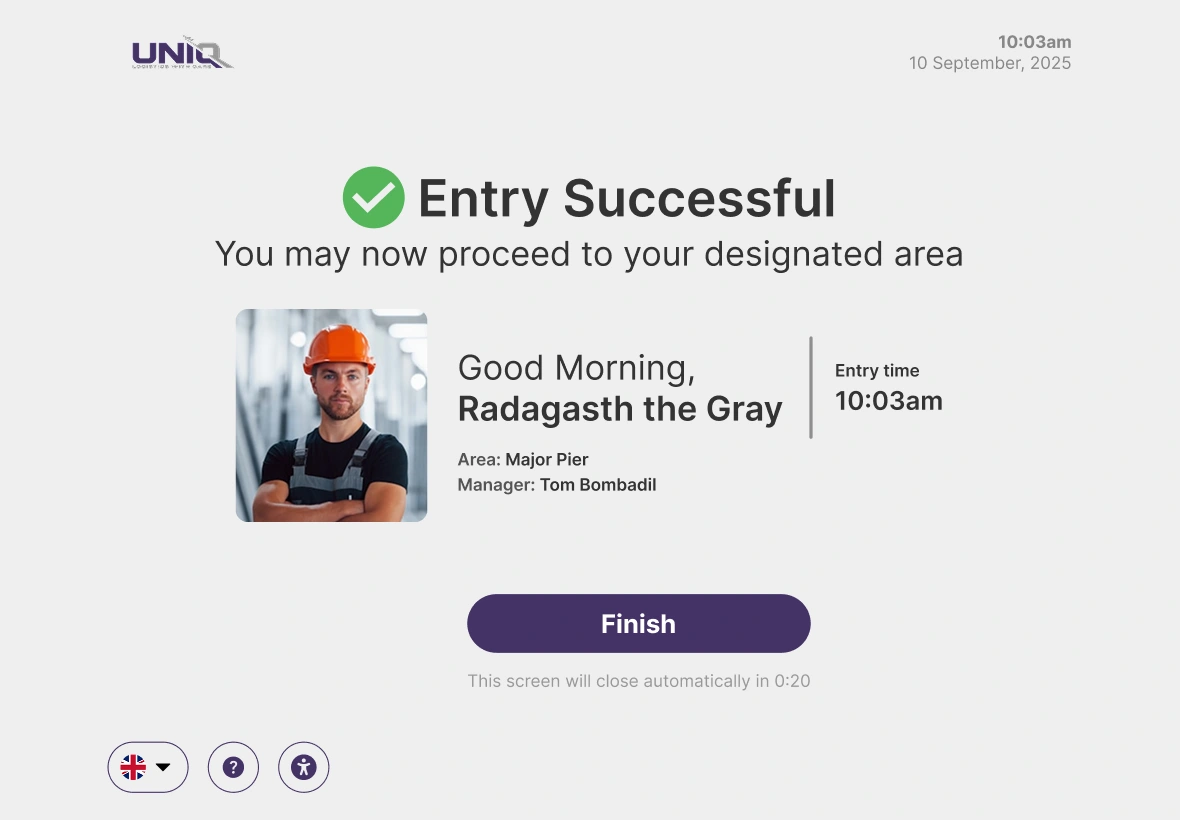
To here?
User Personas
Based on the Chief of Security's description of the two contractor profiles that define his daily operations, we developed these two archetypes to guide the design:
Marco, "The Efficient Veteran" (45, Electrician):
Goals: Get inside in under 20 seconds; doesn't want to talk to anyone; wants the system to remember him.
Frustrations: Waiting too much in line, because they want to have the job done as eficient as possible.
Quote: "I just want to get to work."
Sofia, "The Disoriented Newcomer" (28, Technician):
Goals: Understand the process before arriving; avoid making mistakes; not feel like she's holding everyone up.
Frustrations: Not knowing what documents she needs; feeling the pressure of the people waiting behind her.
Quote: "I wish I could have done all the paperwork last night from home."
2. Definition & Strategy
The research findings led us to establish three core design principles:
Speed for the Regular: The flow for the recurring contractor had to be brutally fast, centered on ID recognition or scanning.
Offload Complexity from the Kiosk: The registration and training process for a new contractor had to be moved to a personal platform (the mobile phone) to eliminate bottlenecks.
Guide the User at Every Step: The interface had to be clear, direct, and handle edge cases (e.g., a contractor with no active contract) in a way that prevents confusion.
3. Design & User Flows
The Complete User Flow
I designed a comprehensive user flow diagram that maps out every possible path for visitors, new contractors, and recurring ones, including all edge cases.
If you wish to see the complete flows, you can see it on this figjam:
Recurring Contractor Flow (On the Kiosk)
This flow is optimized for speed. The user enters their ID, the system validates their status (active and with up-to-date training), takes a daily verification photo, and grants access. The entire process is designed to take less than 20 seconds.
New Contractor Onboarding Flow (Mobile + Kiosk)
The cornerstone of the solution.
Physical Signage: A sign next to the kiosk with a QR code invites new contractors to register from their phone first.
Mobile Registration: A mobile-web experience guides them through a simplified activation form and the mandatory safety training.
First Check-in: Once registered, they use the kiosk for a quick first check-in, which then directs them to security personnel for personal guidance.
General Visitor Flow
A separate, secure process focused on identifying the visitor, their reason for visiting, their host, and notifying both security and the host, managing the visitor's wait in the reception area.
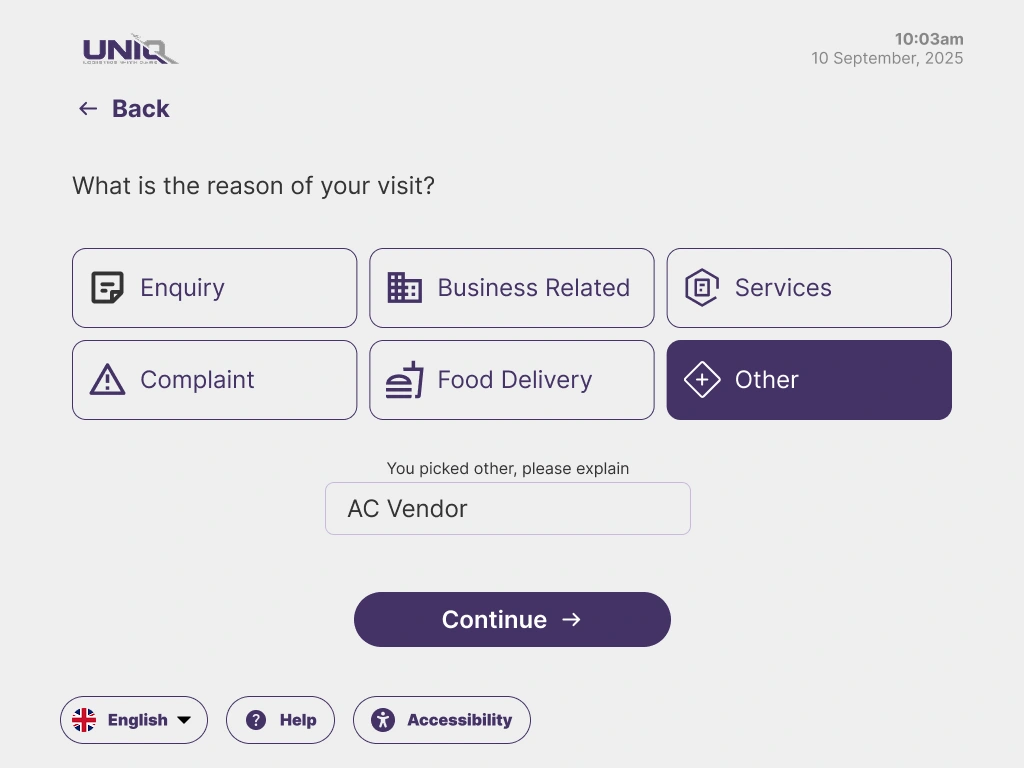
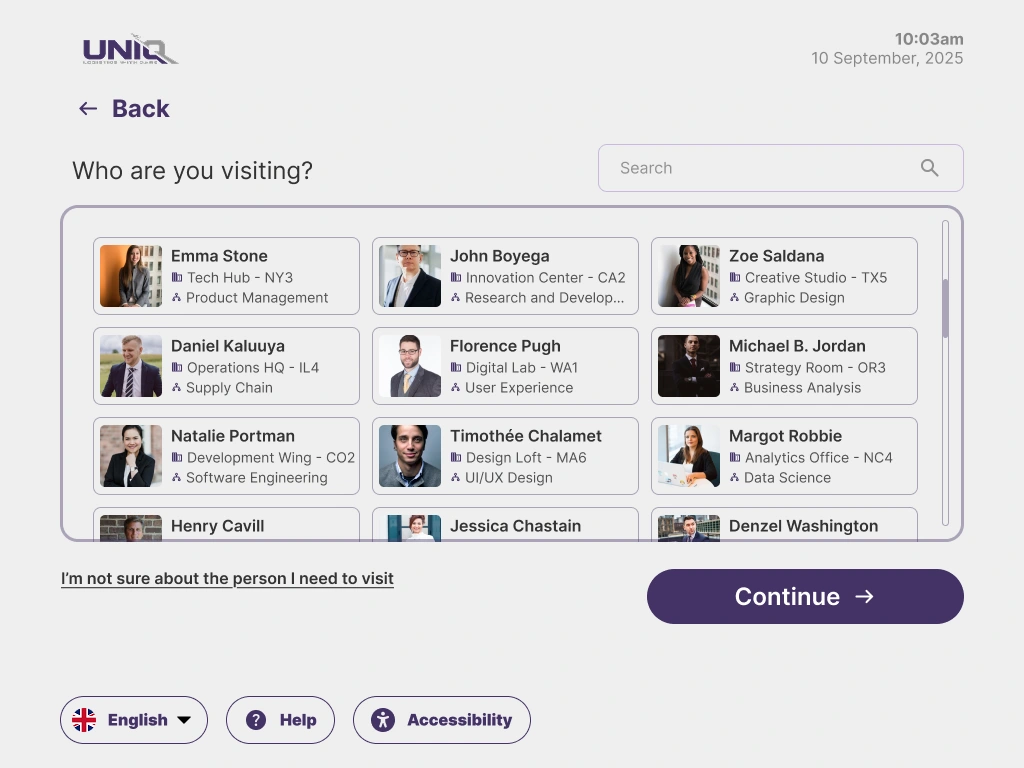
4. Limitations & Next Steps
As designers, it is vital to be transparent about a project's scope. The primary constraint of this project was time, which led us to adopt the expert interview approach.
As a next step in a real-world project, our main recommendation would be to validate these qualitative findings with direct research:
Conduct a survey with contractors to gather quantitative data on smartphone adoption, their willingness to complete pre-registration, and their current frustrations.
Run usability tests of the prototype with both new and recurring contractor profiles to measure time-on-task and user satisfaction.
Conclusion
The final solution transforms a potential bottleneck into a fluid, multichannel check-in experience. By understanding the real-world context of a waiting line and moving complexity to the user's personal device, we not only optimize for speed and security but also drastically improve the first impression the company makes on its most important collaborators: its contractors.
Like this project
Posted Nov 3, 2025
Designing a digital kiosk solution to streamline the check-in for visitors and contractors at high-traffic facilities, replacing manual, paper-based systems.
Likes
1
Views
8




